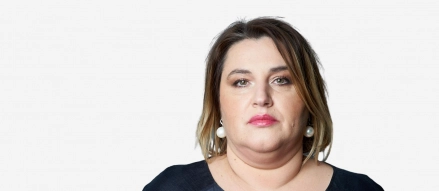
The digital single market – new VAT regime
E-commerce & VAT
According to the current rules, the supply of goods towards individuals is subject to VAT in the country of dispatch, up to a certain threshold established by each Member State (MS). After the value of the supplies exceeds the threshold established by the MS where the customer is located (ranging from €35,000 to €100,000), the supplier is obliged to register for VAT purposes in the respective MS and charge VAT according to the application of the country of arrival.
A simplified system is in place since 2015, but only for B2C e-services (telecommunication, broadcasting, or electronically supplied services) supplied to consumers in other MS. Such regime is known as Mini One-Stop-Shop (“MOSS”). The MOSS regime was introduced to simplify the administration of the VAT treatment in case of e-services supplied to individuals, allowing companies to report and pay the related VAT via a single online portal in the MS where they are established.
As of 1 July 2021, all distance sales of goods will be subject to VAT in the MS where the individual is established. The current thresholds will be cancelled; the MOSS scheme will be extended to OSS – a scheme which will also apply to the supply of goods and services, as well as to certain domestic supplies of goods “facilitated” by electronic interfaces (EI).
The current MOSS scheme will be extended to all B2C supplies of goods/ services in MS where the supplier is not established. Thus, the supplier will still have to charge VAT of the MS of arrival, however, he will no longer be obliged to register for VAT purposes in the respective MS. As such, the supplier will be able to report the relevant VAT via a quarterly OSS VAT return in a single MS. The VAT payment will be also performed towards the respective.
However, the simplified scheme is optional, therefore, companies can choose not to use the OSS system and instead to register for VAT purposes in each MS where they perform relevant supplies. Nevertheless, if an entity chooses to register for OSS then all supplies which fall under the scope of the scheme should be declared in the company’s OSS return. As such, taxable persons will not be able to opt to use the OSS scheme just for supplies in selected MS and not for all the supplies performed in other MS.
The OSS scheme will be used only for reporting output VAT; hence companies will not be able to reclaim any input VAT through this scheme. Such input VAT will be claimed, as until now, through the EU refund procedures (8th Directive or 13th Directive).
Thus, companies that register both output and input VAT should carefully analyse the options and assess whether their business will benefit from a “standard” VAT registration or from a registration in the OSS scheme.
Moreover, even companies that choose to register for OSS will need to take into consideration and apply certain local provisions in force in the MS of arrival, such as the VAT rate, invoicing, etc.
Imports of low-value goods
According to the current EU provisions, no VAT is due for imports of goods of a value up to €22.
As of 1 July 2021, all imports will be subject to VAT, regardless of their value. According to the European Commission, this measure will resolve around €4 billion of VAT fraud caused by imported goods being undervalued to benefit from the current exemption.
A new special scheme was introduced for reporting sales of low-value goods imported from outside the EU – the Import One-Stop-Shop. The IOSS will operate in a similar way to the OSS, meaning that the importer can charge VAT at the point of sale to the customer and declare and pay this VAT via a monthly IOSS return. In addition, the IOSS will allow for a quicker release of imported.
EU businesses can register for the IOSS in their own MS. Non-EU businesses will be required to appoint an intermediary established in the EU to make use of the IOSS scheme (except the case when the seller is established in a country that agreed on mutual assistance with the EU).
Electronic interfaces
As of 1 July 2021, any EI (such as a marketplace, platform, portal, or similar means) who is facilitating a supply of goods will be considered deemed supplier and, therefore, obliged to collect and pay the relevant VAT to the tax authorities. However, for certain activities EI should not be considered as a deemed supplier, such as, but not limited to, processing of payments, listing/ advertising of goods, redirecting or transferring of customers to other EI, etc.
In case EI is considered a deemed supplier, the supply from the seller to the customer will be artificially split into two, as follows: one supply from the seller to the EI and another from the EI to the customer.
As EI is liable to collect and pay VAT, the actual seller will have to provide EI with the relevant information regarding the sale, for EI to establish the correct VAT treatment.
Next steps
As the OSS regime may impact your business you should consider the following actions:
- Check whether the OSS could be applied and the necessary administrative steps (requirements for registration, de-registration, record keeping, etc.); you should set up the appropriate mechanisms to correctly assess the VAT due in the MS of consumption.
- If you decide not to use the OSS, check whether any new registrations are required in any of the MS where you perform B2C sales.
- Analyse the relation with EI, if the case, and make appropriate changes to the invoicing flows (and consequently, transactions’ mapping, IT systems, etc.).

